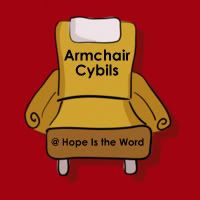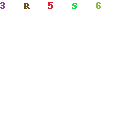 I’ve been so busy blogging Cybils reviews this month, it seems I’ve completely ignored Barbara’s Laura Ingalls Wilder Reading Challenge.
I’ve been so busy blogging Cybils reviews this month, it seems I’ve completely ignored Barbara’s Laura Ingalls Wilder Reading Challenge.
But things aren’t always as they seem, and I’ve been having a blast immersing myself in The Little House in the Big Woods.
Re-reading Little House, I am struck again by how much I identified with Laura as a girl–and how much I still identify with her. On a superficial level, Laura is the second child and I’m the second child. She has brown hair–and so do I. Her older sister is blonde–so is mine. She’s a daddy’s girl–and so am I.
But two scenes are particularly poignant, then and now, reminding me of the ways Laura and I are alike.
When Laura and Mary went to town, Laura filled her pocket with the beautiful smooth stones she’d found by the shores of Lake Pepin. When Pa swung her into the wagon, her pocket, overtaxed with the burden Laura’s exuberant collecting had placed on it, tore right off her dress. Laura cried.
“Nothing like that ever happened to Mary. Mary was a good little girl who always kept her dress clean and neat and minded her manners. Mary had lovely golden curls, and her candy heart had a poem on it.
Mary looked very good and sweet, unrumpled and clean, sitting on the board beside Laura. Laura did not think it was fair.”
How many times have I found myself in a similar situation, I wonder? Wanting to grasp everything life has to offer, collecting experiences and projects and activities like a little girl collecting rocks, only to find out that I’ve overfilled my pockets and wrecked my dress. Then, of course, like Laura, I look with envy at the less ambitious of my siblings, the ones with intact dresses and only one hobby. I think it unfair that I am the way I am and they the way they are.
The second story also deals with sibling rivalry a bit. Laura slapped Mary one day, and Pa punished Laura with a whipping. Once the whipping was over, Laura sat in her chair and sulked. Laura writes: “The only thing in the whole world to be glad about was that Mary had to fill the chip pan all by herself.” Even after Pa mollified Laura’s feeling of inferiority about her (uglier than Mary’s?) hair, Laura is still glad that Mary had to gather all the chips.
That is me, all the way through to the core of original sin. Sulking when I’ve done wrong and gotten punished. Full of my own inferiority (or superiority, depending on the day). Spitefully glad when someone who hurt me (in however small a matter) has to pay.
It’s not a pretty sight, but it’s reality. Me, a full-grown woman, still often acting the part of a five-year-old girl.
Of course, Little House in the Big Woods did inspire more than just reflections on original sin–I also took the opportunity to do some Little House inspired activities.
I made butter and pancake men, rolled my hair in ragless rag curls, and sang “Old Grimes is Dead” (sung to the tune of “Auld Lang Syne”, of course).
You can browse through a full album of my LIW-inspired activities by clicking on the picture below link above.
no images were found
And don’t forget to visit Barbara to see what everyone else has done this month.












